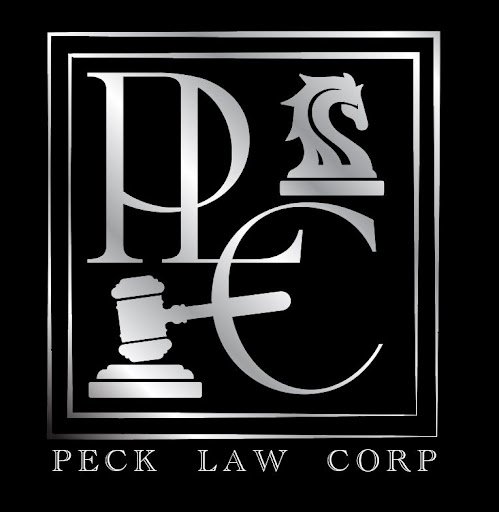Bedsores Are An Indication Of Which Type Of Abuse?
Everyone knows that you get sick when exposed to viruses and bacteria. When we think of these illnesses, we associate them with cold weather and coughing.
What’s less well-known is it’s equally possible to get sick from lying down. That’s because if a patient isn’t moved or turned over enough, they can develop bedsores.
Since we don’t talk about bedsores as much as the common cold, not as many people realize the damage bedsores do. But bedsores can indicate types of elder abuse.
Here we will go over everything you need to know about bedsores, how to treat them, and the options that are available to you if you or a loved one has experienced bedsores as a result of elder abuse.
What Are Bedsores?
To know how bedsores indicate specific types of elder abuse, you must understand what they are.
Bedsores sometimes get called pressure sores by doctors because they develop when too much pressure falls on parts of the body for too long.
They’re comparable to ulcers because the pressure causing bedsores eventually prevents adequate blood flow. When that happens, the tissue around the bedsore necrotizes or dies.
Different Stages of Bedsores
When you spot bedsores on a family member in a care facility, your first instinct is to speculate about bedsores indicating elder abuse.
But not all bedsores are equal. When they first appear, they can be small and easily overlooked. They become gaping wounds with prolonged neglect. Consequently, doctors developed a series of stages to assess bedsore severity.
Stage One Bedsores
Stage one bedsores are easily treatable. At this stage, they’re more inconvenient than painful. The affected area feels warm and spongy. It also has a red or bluish pigment depending on the ethnicity of the person with bedsores.
At this stage, the affected area may itch or be painful. But once the pressure causing the sore goes away, so does the bedsore.
Stage Two Bedsores
Once you see a stage two bedsore, you understand where they get their name. The injury now resembles an open wound rather than a blister. The severity of the damage depends on the pressure on a patient’s body.
Only the outer layer of skin may shed, but in some cases, the damage goes deeper, and the skin under the epidermis likewise sloughs off.
Stage Three Bedsores
Once bedsores reach stage three, they penetrate the muscle. They also do severe damage to all layers of the skin.
At this stage, you should expect to see a deep wound like a crater on the moon.
Stage Four Bedsores
This is the most severe bedsore stage. They’re common in wheelchair users, whose limited mobility builds up pressure around areas like the tailbone and buttocks.
Stage four bedsores more than damage the skin and muscle tissue. They affect the bones and sometimes the nearby joints or tendons. It is challenging to heal a stage four bedsore.
Common Causes of Bedsores
If bedsores indicate types of elder abuse, you need to know what causes them. That helps you prove a caregiver failed your loved ones in a duty of care.
Friction
You now know that a significant cause of bedsores is pressure, as when a patient spends a long time lying in bed or sitting inactive in a wheelchair.
Another cause is friction, like a bedsheet rubbing persistently against the skin. To prevent this, bed-bound patients should be turned over at least every two hours to alleviate pressure caused by friction.
It also helps to reduce the number of sheets and mattress covers or protectors on the bed.
Dehydration and Malnutrition
Sometimes bedsores indicate more insidious elder abuse. Malnutrition and dehydration both breed bedsores when combined with other factors.
Even if a carer regularly turns their patient or keeps them mobile, it’s difficult for bedsores to heal without adequate food and water.
Symptoms of malnutrition may include:
Apathy about food
Fatigue
Reduced concentration/cognitive function
Feeling cold
Complications of Bedsores
Even if you don’t suspect a loved one’s bedsores indicate elder abuse, they pose severe complications. For that alone, they’re worth preventing.
Decreased Sensitivity
Another thing to know when evaluating what type of elder abuse causes bedsores is that many people who have them are less sensitive to pain.
That may cause them to overlook injuries anyone else would find painful. When that happens, it slows the healing process and prevents them from receiving appropriate medical treatment.
Moisture
Hydration is important for preventing bedsores. So when assessing risk factors like what type of elder abuse causes bedsores, many people overlook the damage over-moisturizing skin can do.
Overly hydrated skin is more susceptible to friction and by extension, to bedsores.
Blood Flow
Later-stage bedsores decrease blood flow to the damaged tissue. But sometimes a pre-existing health condition reduces blood flow anyway. That can make bedsores form faster for these patients.
Always ensure caregivers have a thorough medical history of your family member and can work with you to help prevent bedsores.
Treating Bedsores
Bedsores are most treatable in their early stages. Caregivers should pay special attention to red or irritated skin. They should also alert you and other staff if they notice blisters forming.
Once they become more advanced, they may need to dress the wound and prescribe medications as appropriate.
In order to properly treat bedsores, the pressure on the affected area needs to be relieved, and the person needs to be repositioned frequently to prevent further damage, first and foremost.
Second, the wound needs to be cleaned with saline solution or another wound cleanser, and the dead tissue needs to be removed.
Third, you need to cover and protect the wound to promote healing.
Fourth, antibiotics may be necessary to treat or prevent infection.
Lastly, it is essential to address the underlying cause of the bedsores, such as poor nutrition or medical conditions, to prevent further occurrences.
Contact a Bedsores Attorney Today
Bedsores are a serious issue and can be a clear indication of elder abuse. It is crucial to seek medical attention promptly and address the underlying cause of the bedsores. If you believe that your loved one has been a victim of elder abuse, it is important to take action and protect their rights. The type of elder abuse that causes bedsores varies wildly. It could involve malnourishment or dehydration. Alternatively, the caregiver may not turn or move a patient with limited mobility as much as they need.
Crucially, none of these behaviors is acceptable.
Our team here at Peck Law Corporation has extensive experience in handling bedsore cases and can provide the legal support and guidance you need. If you suspect elder abuse is behind your loved one’s bedsores, contact us today to schedule a consultation and learn more about how we can help you and your family. We are here to help.




